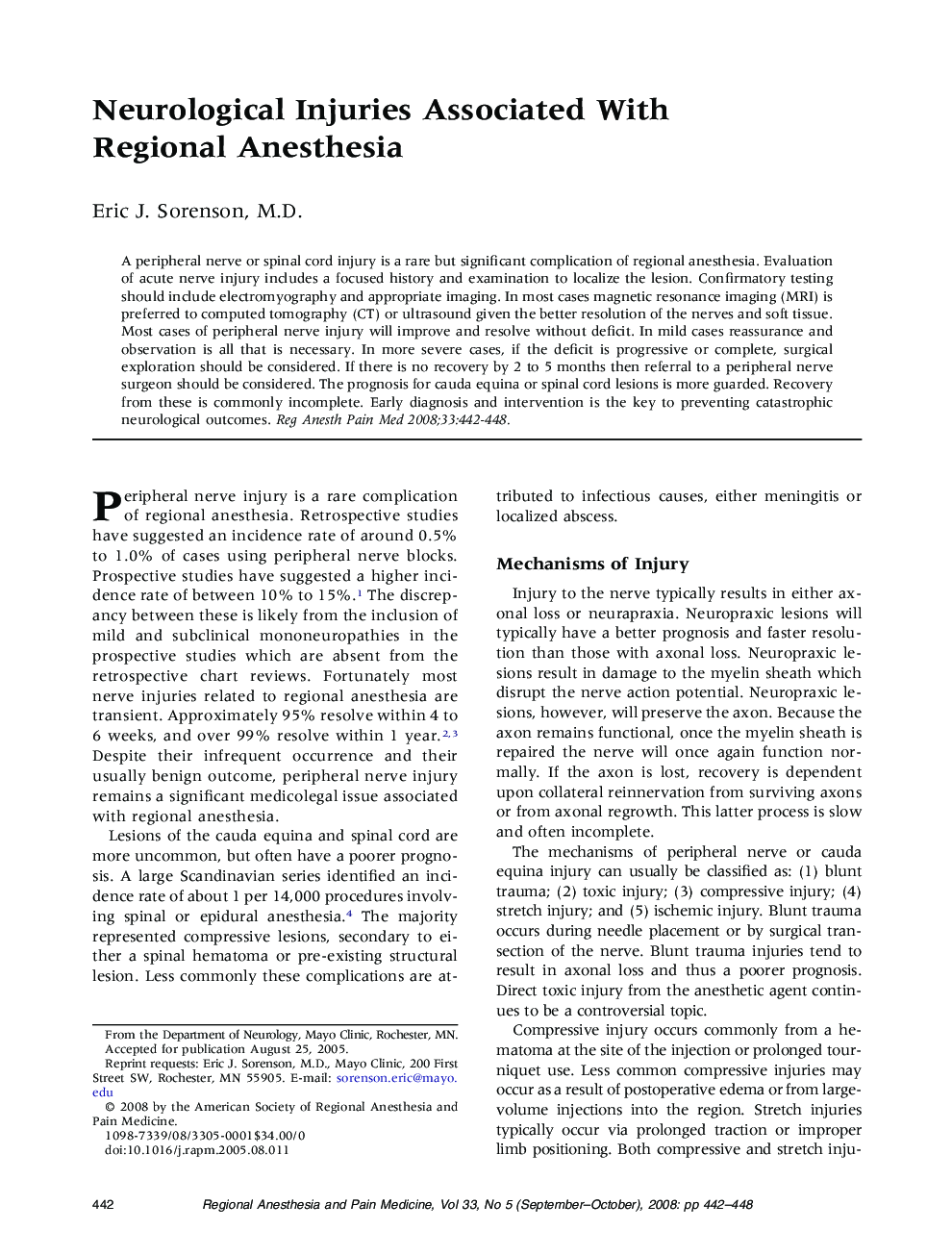| Article ID | Journal | Published Year | Pages | File Type |
|---|---|---|---|---|
| 2766767 | Regional Anesthesia and Pain Medicine | 2008 | 7 Pages |
Abstract
A peripheral nerve or spinal cord injury is a rare but significant complication of regional anesthesia. Evaluation of acute nerve injury includes a focused history and examination to localize the lesion. Confirmatory testing should include electromyography and appropriate imaging. In most cases magnetic resonance imaging (MRI) is preferred to computed tomography (CT) or ultrasound given the better resolution of the nerves and soft tissue. Most cases of peripheral nerve injury will improve and resolve without deficit. In mild cases reassurance and observation is all that is necessary. In more severe cases, if the deficit is progressive or complete, surgical exploration should be considered. If there is no recovery by 2 to 5 months then referral to a peripheral nerve surgeon should be considered. The prognosis for cauda equina or spinal cord lesions is more guarded. Recovery from these is commonly incomplete. Early diagnosis and intervention is the key to preventing catastrophic neurological outcomes.
Related Topics
Health Sciences
Medicine and Dentistry
Anesthesiology and Pain Medicine
Authors
Eric J. M.D.,
